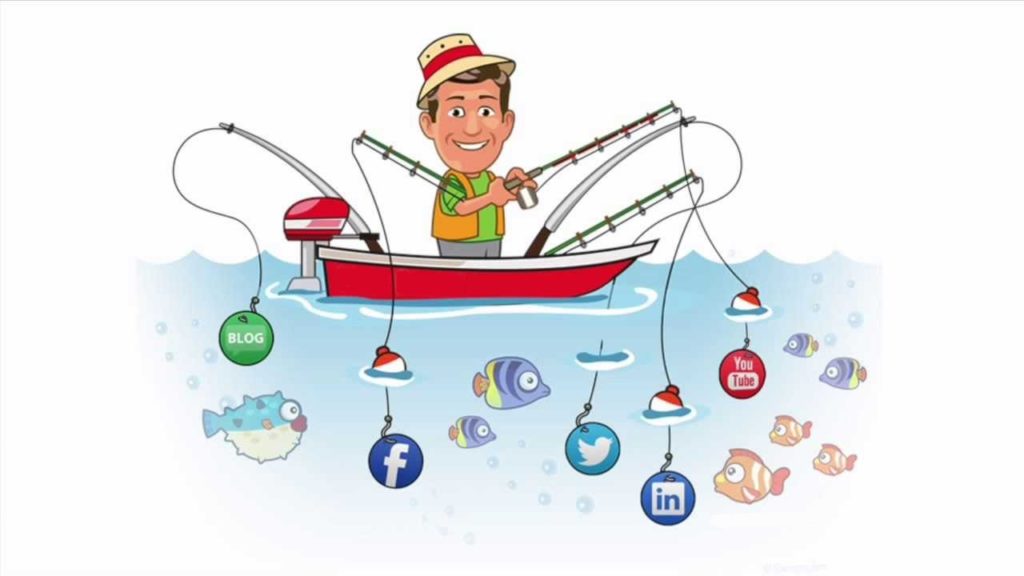Is Social Media Helping or Hurting Fishing?

Social media is an enormous part of our everyday lives. We share photos on Instagram, status updates on Facebook, and random thoughts on Twitter. It has become so enmeshed in our culture that if I, Matthew Davies, go a full day without commenting on or scrolling through these pages, I start to feel odd.
Although it can be an excellent way to keep connected with friends and family, the way we look at certain other hobbies is shifting. Fishing is one of these. When it appears on social media, this typically lonely hobby finds itself in the spotlight. Below, I will discuss if this use of social media is improving or diminishing the sport.
Getting Started
It can be challenging to get started if you do not know someone who is fishing and is willing to show you how to do it. Sure, you can watch all YouTube videos that your heart desires, but there is nothing like someone teaching you how to wind a reel, bait a line, or set a lure firsthand.
Social media can be instrumental in helping new people get involved, especially people who are eager to learn who may not have family or friends willing or able to assist them. It sounds silly, but social media really brings people together in this situation. You will find someone willing to speak to you or help you out by just posting on your city’s local Facebook page if you have a question or want to find someone who can teach you the ropes.
Education
Do you know what fish you can catch during the various times of the year? If you live on the Gulf Coast, do you understand when you can or cannot search for scallops, as well as what the limitations are? Do you know how and where you need to enjoy this activity legally to get the requisite fishing licenses?
All this and more, social media will tell you. Suppose there is a halfway good social media team at your local fish and wildlife department. In that case, they will keep you updated about seasonal changes, licensing needs, and regulatory changes as they arise—no need to dig for websites that are obscure or even deceptive. I suggest you search for Facebook or your favorite web browser to find out if you can find the Fish and Wildlife office near you.
Fishing applications that concentrate primarily on fishing and fishing tips are also available. An excellent example of this is Fishidy. Fishidy has amassed fishing maps of thousands of rivers in the United States. Fishidy also has a fishing forecaster explaining the best time to fish for various species in each waterway. On Fishidy’s “Activity Stream,” there is also the opportunity to post your catch and interact with other anglers. There are both free and paid versions of the application that are definitely worth checking out.
Environment
There is nothing worse than arriving at your favorite fishing place only to discover it is overrun with trash, or because of runoff from a nearby farm or plant, the water has turned a sickly green color. While you can contact your local news columnist and bring it to their attention, there are better than average odds that you will end up on the back page as nothing more than a blurb. Social networking is a useful public relations tool for corporations, and they do not want it to go viral when something goes wrong.
It might be everything you need to do to get things changed by taking a few photos and writing a convincing post to go with them. Since social media is public, calling them out on your chosen platform may be the easiest way to get their attention. Any negative press that they cannot manage is the last thing they want. Social networking will be your best friend if your favorite fishing spot is full of garbage and you can find out the culprit.
Unintended Consequences
Of course, unintended consequences can arise, as in most everything. A social media post gone viral could drive dozens or even hundreds of people to your favorite fishing spot. It might make your hobby hard for you to enjoy, mainly if the people who begin to arrive are rude or do not want to share space with others.
If you are concerned about your place being hijacked, just turn off the location settings on your phone so that the pictures are not geotagged and do not tell anyone where you are going. You can set your catch to private if you are using Fishidy and protect your catch data and location. Sometimes privacy is your best friend when it comes to fishing.
Conclusion
Viral posts are a positive thing for fishing in most situations. They are attracting more people to the sport and provide a source of data for those who desire to learn about what it takes to catch their first fish.
For both avid anglers and newbie fly-casters alike, using the positive aspects of social media can be successful. It’s a perfect way to collect data, engage with others and even rein in emissions. You are going to be part of a like-minded culture, and that is a nice feeling. So, I, Matthew Davies, suggest that you not only get out there and fish but hit up your favorite social media platform and interact with other anglers. Perhaps you might even find a new friend or a place to fish that you never thought about. I wish you the best of luck on your next fishing trip and hope you land your personal best!